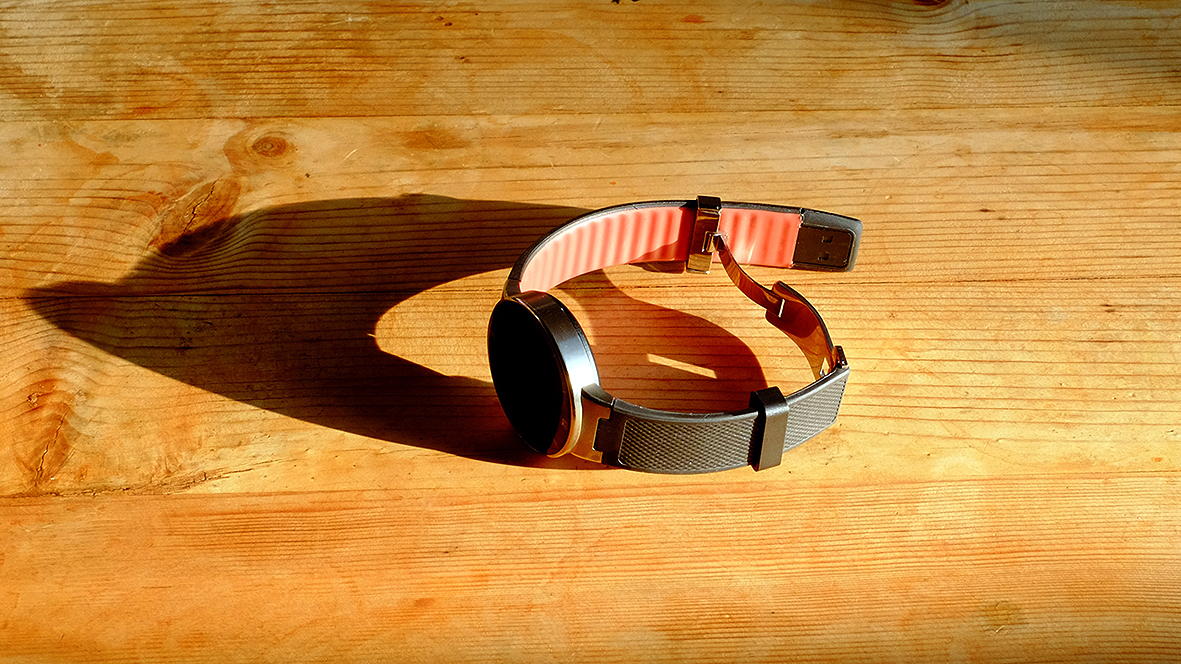TechRadar Verdict
The Alcatel OneTouch should find an audience with those who want a low-cost smartwatch. However, most of them would be better served with the similarly priced Sony Smartwatch 3.
Pros
- +
Better-than-average battery life
- +
Metal sides, glass front style feels good
- +
Handy integrated charge cable
Cons
- -
Features so limited it's barely smartwatch
- -
Screen just OK
- -
Low fps software gives sluggish vibe
Why you can trust TechRadar
From a distance it seems the sea of smartwatches boils down to two choices: the Apple Watch and Android Wear watches. There are others, though.
The Alcatel OneTouch Watch attempts to cover most of the smartwatch basics using bespoke software, not everyman choice Android Wear. This means it's cheaper than most other models while also being smaller than some and lasting longer off a charge.
Pick the right discussion points and it can sound like the Alcatel OneTouch Watch has hit on a golden formula. But it hasn't, not quite. With limited apps and a system all but guaranteed to be a dead end, it has little-no-none of the promise offered by Android Wear devices.
Design
The Alcatel OneTouch Watch is best appreciated from arm's length. From that distance you can see it's a smartwatch with a swish metal rim – not too thick, and not so large that it threatens to engulf your whole arm in a cloud that screams "I'm a big tech nerd."
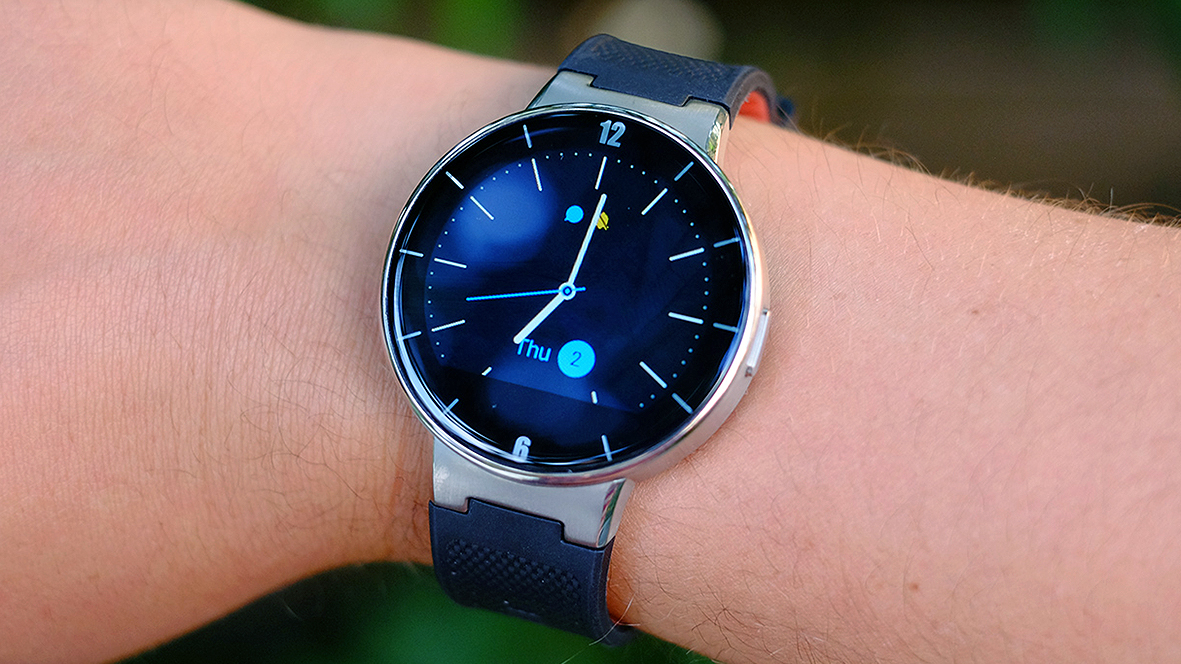
From afar it looks a bit like a smaller, more normal-looking Motorola Moto 360. That sounds great, but the closer you get, the more signs you'll see that the Alcatel OneTouch Watch is less luxurious, less swish, just less desirable.
The silvery lettering around the watch face, the clunky-looking join between the metal face and the rubber strap: these slightly naff elements make the Alcatel OneTouch Watch seem like a budget alternative to some Android Wear contemporaries. And at £110-140, it's cheaper, but not that much cheaper.
Comfort
Thanks to the proprietary strap system you can't bung on a classier leather strap either. And the stiff style of the default one isn't all that comfortable compared with the best Wear watches, Apple Watch or Pebble Time. While the decent battery life means you could wear it 24/7, I just didn't really want to most of the time.
Sign up for breaking news, reviews, opinion, top tech deals, and more.
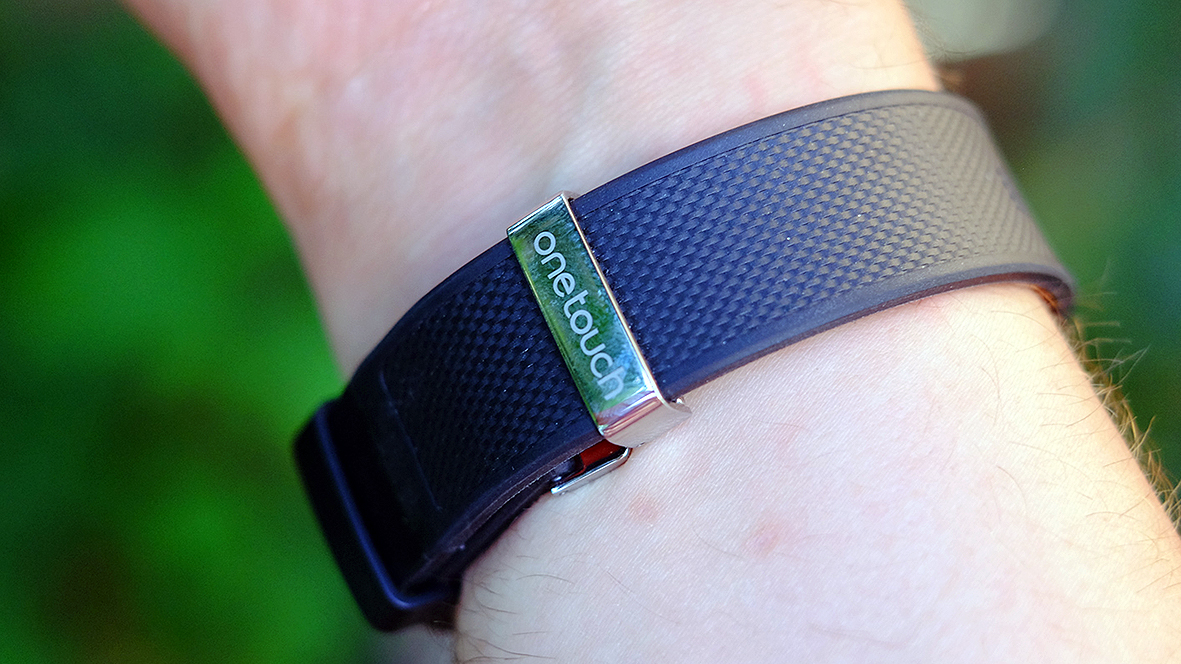
As well as having a stiffer-than-average strap, the clasp-style fastener isn't as comfortable as a generic strap either.
There are a few smart design ideas to the Alcatel OneTouch Watch, though. First, the end of the watch strap folds out to reveal a USB connector you simply plug into a USB port or charger to juice the watch up. It's another confirmation you aren't ever going to be able to change the strap, but does mean there are no annoying proprietary cables to forget when you're travelling.
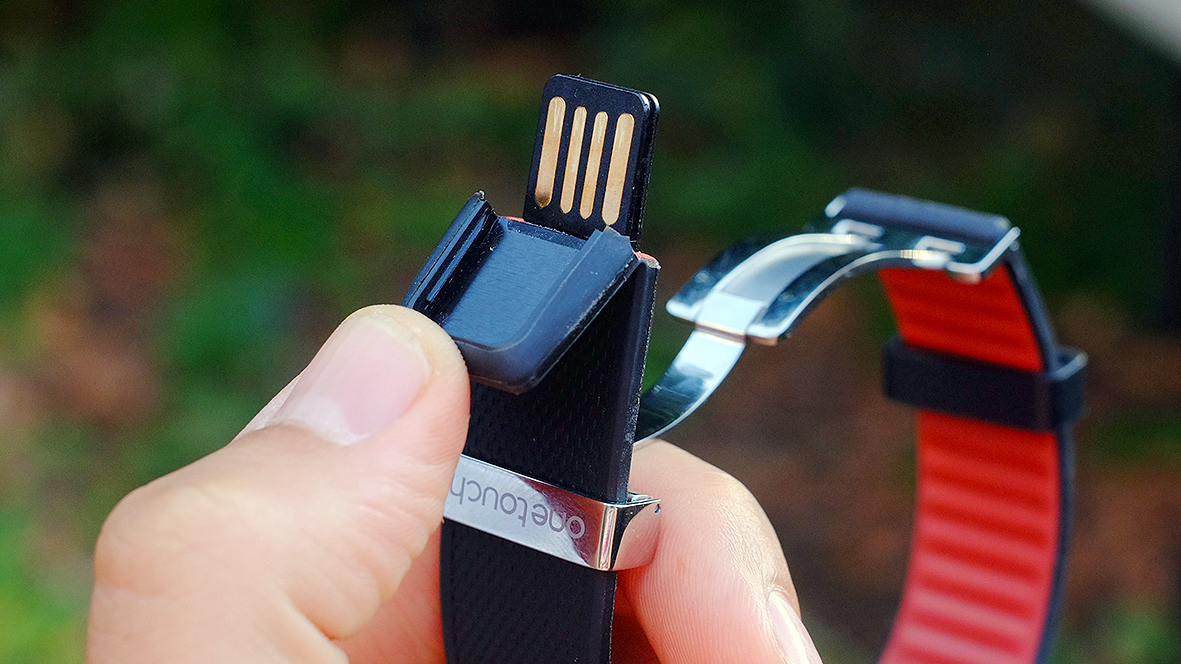
It helps make the Alcatel OneTouch Watch water resistant too: no sockets, no worries. It can be worn in the shower, the swimming pool – pretty much wherever you like.
And once fully charged using the USB strap, you'll get around two to three days' use before needing to plug it in again. It's the Alcatel OneTouch claim, and it's on the money. This is just a step down the long road of getting from where we are with smartwatch batteries to where we want to be. But at least it's better than an Apple Watch.
Software
Some longer-lasting watches use clever screens to boost their staying power. But this one uses different software instead. It has a custom Alcatel OneTouch interface, not Android Wear.
The Alcatel OneTouch Watch is comprised of a watch face of your choosing (two analogue, one digital, that's it) plus a scrolling menu of brightly-coloured tiles that show the watch's features. It's bold and it's colourful. But it's also the smartwatch equivalent of a feature phone.
The only things it really does by itself are the kinds of function you could theoretically squeeze out of a fitness tracker.
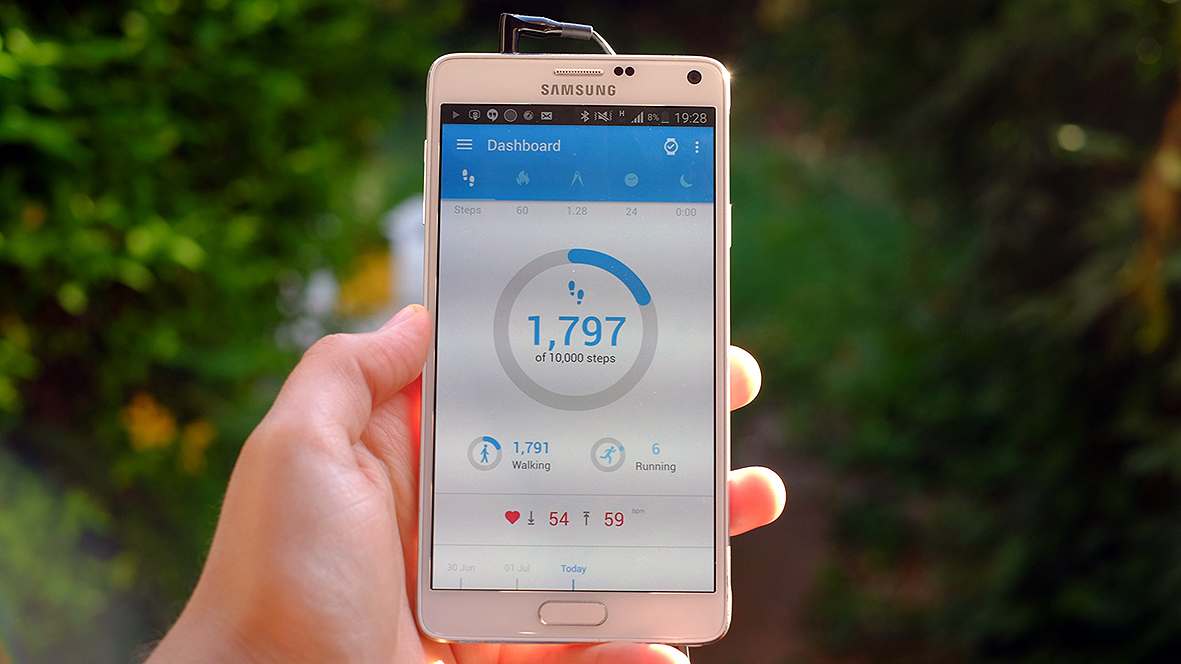
What can it do? The meat of this smartwatch sandwich is notifications, which the watch receives from your phone over Bluetooth. As it only deals with default Android notifications, not the kind used by Android Wear, you only get short excerpts. There's no reading full emails on here.
A bit like a Christmas cracker Swiss army knife, it has a few tools as well, but not many that'll be all that useful day-to-day. You get a weather read-out sent from your phone, a stop watch, compass and remote camera shutter.
Music controls are more useful, but feel a bit slow and awkward, especially altering volume, which involves working your finger around the watch face in a way that shows up Bluetooth lag mercilessly.
Then there's what actually turn out to be the Alcatel OneTouch Watch's main features: its fitness capabilities. It has the usual array of motion sensors (not GPS), letting it tell you very roughly how many steps you've taken and how far you've walked, and a calorie counter to let you know how many hamburgers you've earned. It's all nicely relayed both on-screen and in the companion app.

The Alcatel OneTouch Watch goes one level further by adding a heart rate sensor. It lives in the plastic underside, where most watch HR sensors go. It's not all that great, though.
I took it to the gym to compare its read-outs to those of the sensors of a treadmill. At the best of times the results were similar, within 1-3bmp of each other. However, the Alcatel OneTouch Watch only works if you keep your arm quite still. Try to get an HR reading during a run and it'll likely either fail completely or return a wildly inaccurate result. No smartwatch currently offers the HR accuracy of a chest strap sensor, but most are better than this.
There's something to like about the simplicity of the Alcatel OneTouch Watch. Unlike some Android Wear rivals, you never feel it's clutching desperately at reasons to justify its existence. But don't you want a bit more than this basic array of features? This is your lot as well, because there's no app store.
There's no sense of having a ticket to the rapidly-developing smartwatch future here.
Day-to-day use
Now, this might be fine if the simplicity of software was joined by the thing fitting into your life like, well, a normal watch. But it doesn't. Like other standard LCD screen watches the Alcatel OneTouch Watch does not have an always-on screen so you need to either press the button on the side to get the time or use a pretty vigorous wrist flick.
A big part of giving the Alcatel OneTouch Watch the smartwatch factor is simply touchscreen operation. Pokes and swipes get you through the interface, while tapping the 6 on the clock face is the universal way to go back. The screen very much gets involved.
Its screen isn't the prettiest, though. The problem with using a normal backlit LCD screen in watches is that smartphones, even cheap ones, have taught us to expect very high-quality, high ppi LCD screens, and this isn't one. It's not terrible, with fine viewing angles and OK colour, but it's quite obviously pixellated (240 x 204 resolution). And, like the Moto 360, it cuts off the bottom bit of the screen to fit in the display driver, so isn't perfectly round either.
The there's the Alcatel OneTouch Watch's responsiveness. As the watch is so simple, there are never any long load screens to wait through. But the whole thing seems to run at an usually low frame rate, giving the impression of lagginess throughout. This is likely to be a battery-saving measure, but it hardly helps to convince you that this is £140 well-spent.
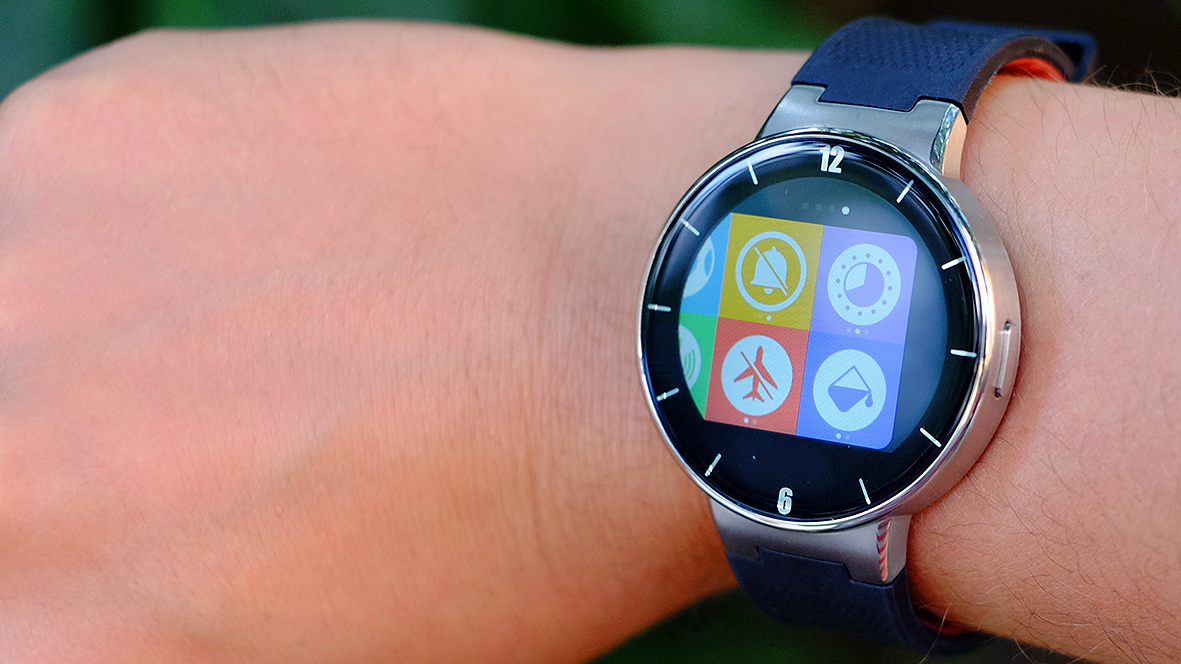
There are a few too many compromises in the Alcatel OneTouch Watch, but in more practical terms the screen is fine. It has three brightness levels, and the second one does just fine even on bright days. You should only need the top one on bright and cloudy days, which produce the worst reflections. We'd ideally like an ambient light sensor that moves through these settings automatically, but smartwatches aren't quite at the level of maturity that means we can kick up a big stink at this feature's absence.
After using the Alcatel OneTouch Watch for a couple of weeks now, I have come to accept it's really a glorified (and not that glorious) fitness tracker that unfortunately co-opts several of the issues that dog full-blown smartwatches. These issues include so-so battery life and a screen that's not on whenever you need it, with a display style our spoilt eyes can't see as anything but a budget compromise.
The Alcatel OneTouch Watch is not terrible by any means. But if you want a low-fuss smartwatch with a simpler style than an Android Wear watch, we think you'd be happier with one of the three Pebble watches. As well as lasting longer, they offer much greater functionality thanks to their dedicated app ecosystem, while the day-to-day benefits of an always-on screen can't be overstated.
Verdict
Earlier this year we talked to Alcatel OneTouch about why they chose to make an unusual watch like this rather than an Android wear one. They told us they couldn't make a device this slim and long-lasting with Wear.
Fine. But what we end up with comes across as an impersonation of a smartwatch with little-to-none of the flexibility, customisation or future potential of Android Wear, WatchOS or Pebble OS. That last comparison is particularly apt, as Pebble watches have some of the same "simple is good" ideas, but they just do the job better.

TechRadar's former Global Managing Editor, John has been a technology journalist for more than a decade, and over the years has built up a vast knowledge of the tech industry. He’s interviewed CEOs from some of the world’s biggest tech firms, visited their HQs, and appeared on live TV and radio, including Sky News, BBC News, BBC World News, Al Jazeera, LBC, and BBC Radio 4.
